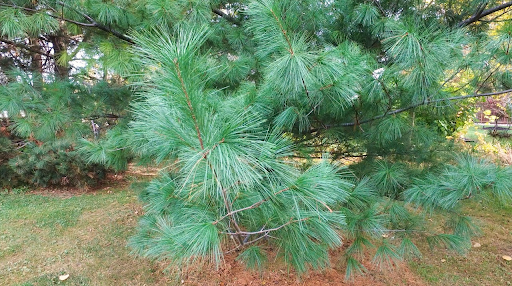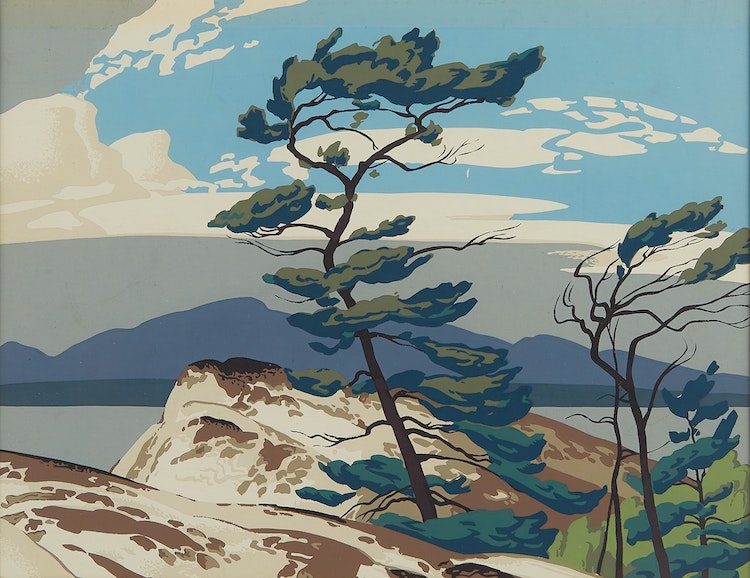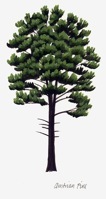Pines
Pines are conifers that are divided into two groups – soft or White Pines, and hard or Yellow Pines. Firs are part of the Pine family.
Soft Pines, like the Eastern White Pine, have needles in bundles of five with one vein. The twigs to which the needles are attached are smooth. The scaly cones hang downwards from the branches.
Hard Pines, like the Red Pine, have needles that are in bundles of two. This arrangement of needles makes the Red Pine easy to distinguish from the White Pine.
There is one native Pine on the Tree Walk – the Eastern White Pine, which is the provincial tree of the Province of Ontario. Many Canadians will be familiar with its windblown shape from the famous painting, White Pine, by A. J. Casson, who was a member of the Group of Seven, Canadian painters. The original is part of the McMichael Canadian Art Collection in Kleinburg, where the Bevan family lived for many years. The third of the Bevan’s four children, Lynn Bevan, was one of the first guides at the Gallery and has continued as a volunteer at the Gallery throughout her life.






